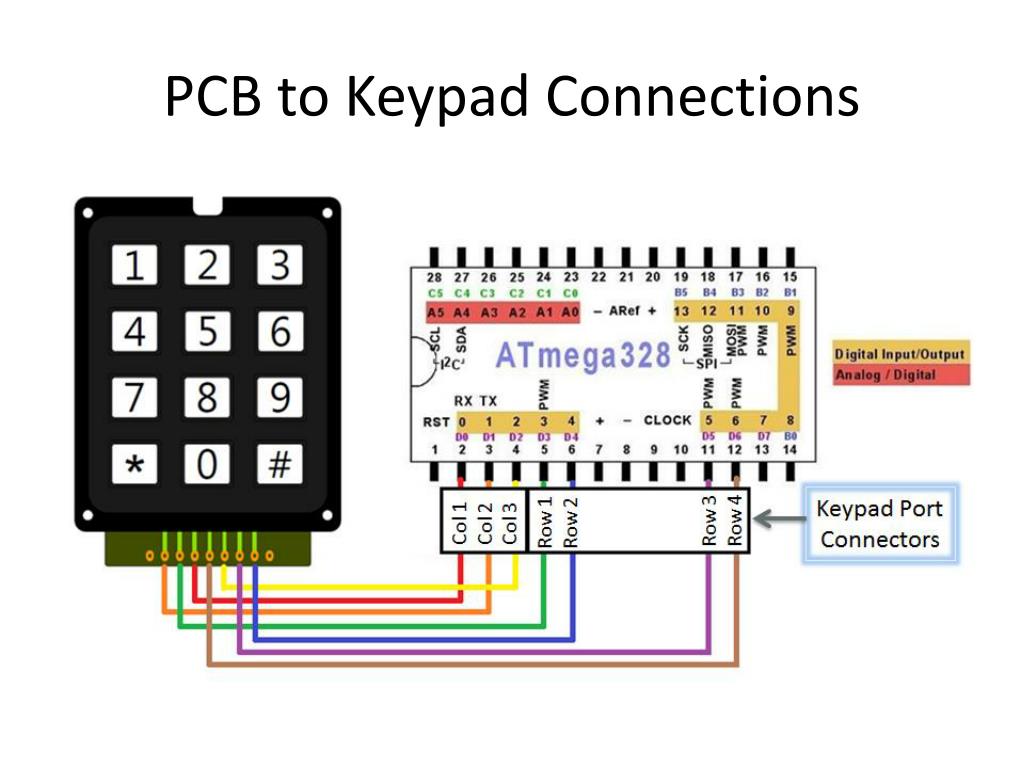
- Chip pin keypad layout serial#
- Chip pin keypad layout driver#
- Chip pin keypad layout pro#
- Chip pin keypad layout software#
- Chip pin keypad layout code#
initialize digital pin LED_BUILTIN as an output. the setup function runs once when you press reset or power the board Once the upload is finished, you should see the Arduino’s built-in LED blinking.
Chip pin keypad layout code#
Once the example code (also shown below) is loaded into your IDE, click on the ‘upload’ button given on the top bar. To get it started with Arduino Uno board and blink the built-in LED, load the example code by selecting Files>Examples>Basics>Blink. Arduino Uno is programmed using Arduino programming language based on Wiring. Now open the arduino IDE and choose the correct board by selecting Tools>Boards>Arduino/Genuino Uno, and choose the correct Port by selecting Tools>Port. Once arduino IDE is installed on the computer, connect the board with computer using USB cable. When ATmega328 chip is used in place of Arduino Uno, or vice versa, the image below shows the pin mapping between the two.Īrduino IDE (Integrated Development Environment) is required to program the Arduino Uno board.
Chip pin keypad layout software#
The Arduino software includes a Wire library to simplify use of the I2C bus. The ATmega328P also supports I2C (TWI) and SPI communication.
Chip pin keypad layout serial#
A SoftwareSerial library allows for serial communication on any of the Uno's digital pins. There are two RX and TX LEDs on the arduino board which will flash when data is being transmitted via the USB-to-serial chip and USB connection to the computer (not for serial communication on pins 0 and 1). The Arduino software includes a serial monitor which allows simple textual data to be sent to and from the Arduino board.
Chip pin keypad layout driver#
The ATmega16U2 firmware uses the standard USB COM drivers, and no external driver is needed. An ATmega16U2 on the board channels this serial communication over USB and appears as a virtual com port to software on the computer. The ATmega328P microcontroller provides UART TTL (5V) serial communication which can be done using digital pin 0 (Rx) and digital pin 1 (Tx).
Chip pin keypad layout pro#
Note: Complete technical information can be found in the Arduino UNO Datasheet, linked at the bottom of this page.Īrduino Nano, Arduino Pro Mini, Arduino Mega, Arduino Due, Arduino MKR1000 Wi-Fi Board, Arduino LeonardoĪrduino Uno is a microcontroller board based on 8-bit ATmega328P microcontroller.

To provide reference voltage for input voltage.ĪTmega328P – 8 bit AVR family microcontroller Used to receive and transmit TTL serial data.ġ0 (SS), 11 (MOSI), 12 (MISO) and 13 (SCK) Used to provide analog input in the range of 0-5V Vin: Input voltage to Arduino when using an external power source.ĥV: Regulated power supply used to power microcontroller and other components on the board.ģ.3V: 3.3V supply generated by on-board voltage regulator. Along with ATmega328P MCU IC, it consists other components such as crystal oscillator, serial communication, voltage regulator, etc. Arduino Uno is a popular microcontroller development board based on 8-bit ATmega328P microcontroller.


 0 kommentar(er)
0 kommentar(er)
